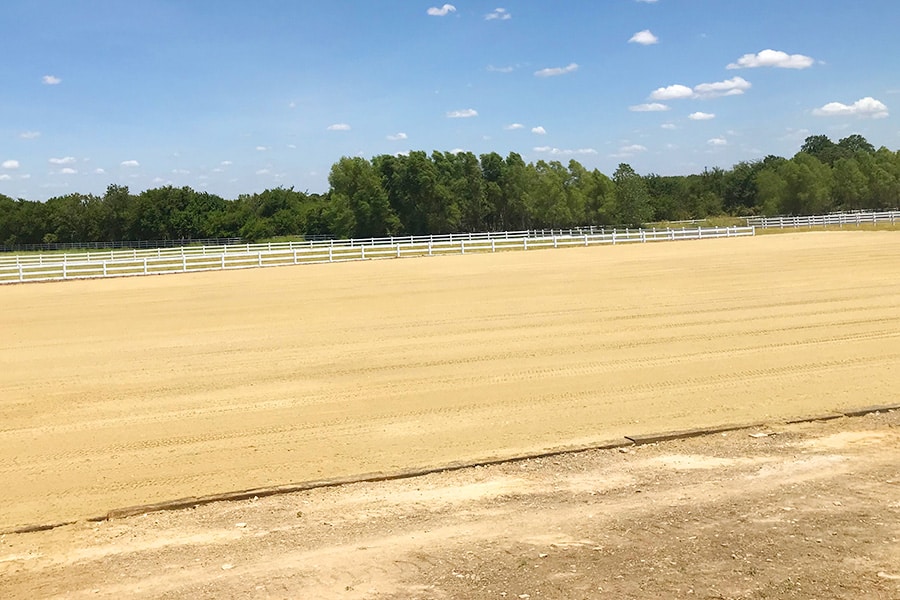The task of evaluating your arena’s footing may seem like a daunting one. These short and simple steps can help ensure a healthier arena, or potentially alert you of a need to switch footing material and composition. Luckily, we’re here to walk you through a few of the simple ways you can keep an eye on the integrity of your arena.
Healthy vs Unhealthy Arena Footing
Knowing the condition of your arena footing is incredibly important in remaining consistent with maintenance and safety for both your riders and horses. Evaluating arena footing is one of the simple ways to ensure proper upkeep and maximum comfort for your animals.
Healthy Footing
A well-groomed arena is a rider’s best friend, but what makes footing good or bad? When working a horse on healthy footing, their movements should feel clean and swift with little to no resistance.
Healthy arena footing should be consistent in depth and texture throughout the arena, while being packed but not impenetrable. Having healthy footing is essential for your arena as it allows for longer training sessions and decreases the likelihood of injuries. Footing allows a reduction in fatigue on muscles and ligaments, helping your horses stay healthier for longer
Unhealthy Footing
Unhealthy footing tends to be incredibly loose, causing the horse to sink while being worked. When the arena surface is too loose the horse will slide more and attempt to overcompensate, straining the muscles and ligaments. Not only does this add stress to the horse’s legs, but also risks injury to the horse or potentially the rider. Remember, footing is meant to offer stability and cushioning to your horses.
Two Ways to Evaluate Arena Footing
Testing the arena footing is a fairly simple task and should be completed on a regular basis. Below are a few efficient ways to examine your arena.
Evaluate the Cushion
An important feature of riding arenas is that they are cushioned. Healthy footing provides this cushioning, reducing stress on your horses as they use the arena. The first way to test the integrity of the cushion is to simply walk into the arena and bounce on the footing. Slightly dig your heel downward. The footing should indent slightly, but no more than an inch. If your heel is able to penetrate more than an inch then you know your cushioning could use some assistance.
Another way to check the integrity of your footing is to mount your horse and take a walk around the arena. Dismount at random intervals and examine the footing. Again, there should be no more than an inch or so of indentation in the material.
Evaluate the Moisture
Moisture is a key component of a healthy arena, if your arena is too loose that means it’s time to groom and water. Moisture is essential in forming a good riding surface, following proper watering techniques can help ensure consistency in your arena’s moisture levels.
An easy way to test the moisture content of your arena is to gather a handful of footing and create a ball. If you can create a ball that holds together then typically your moisture is at an acceptable level. However, if you open your hand and the ball crumbles, that signifies that you either need to add more moisture or pick a more suitable footing for your arena.
Check out this blog post that covers all that you need to know about watering your arena.
Performance Footing Can Help!
At Performance Footing, we are dedicated to assisting customers with product solutions to make maintaining the horse arena of their dreams easy. We can educate and supply the materials, additives, and equipment to keep your arena in top condition. Allow our team to assist in answering questions or ordering products today! Please contact us at (877) 835-0878.
